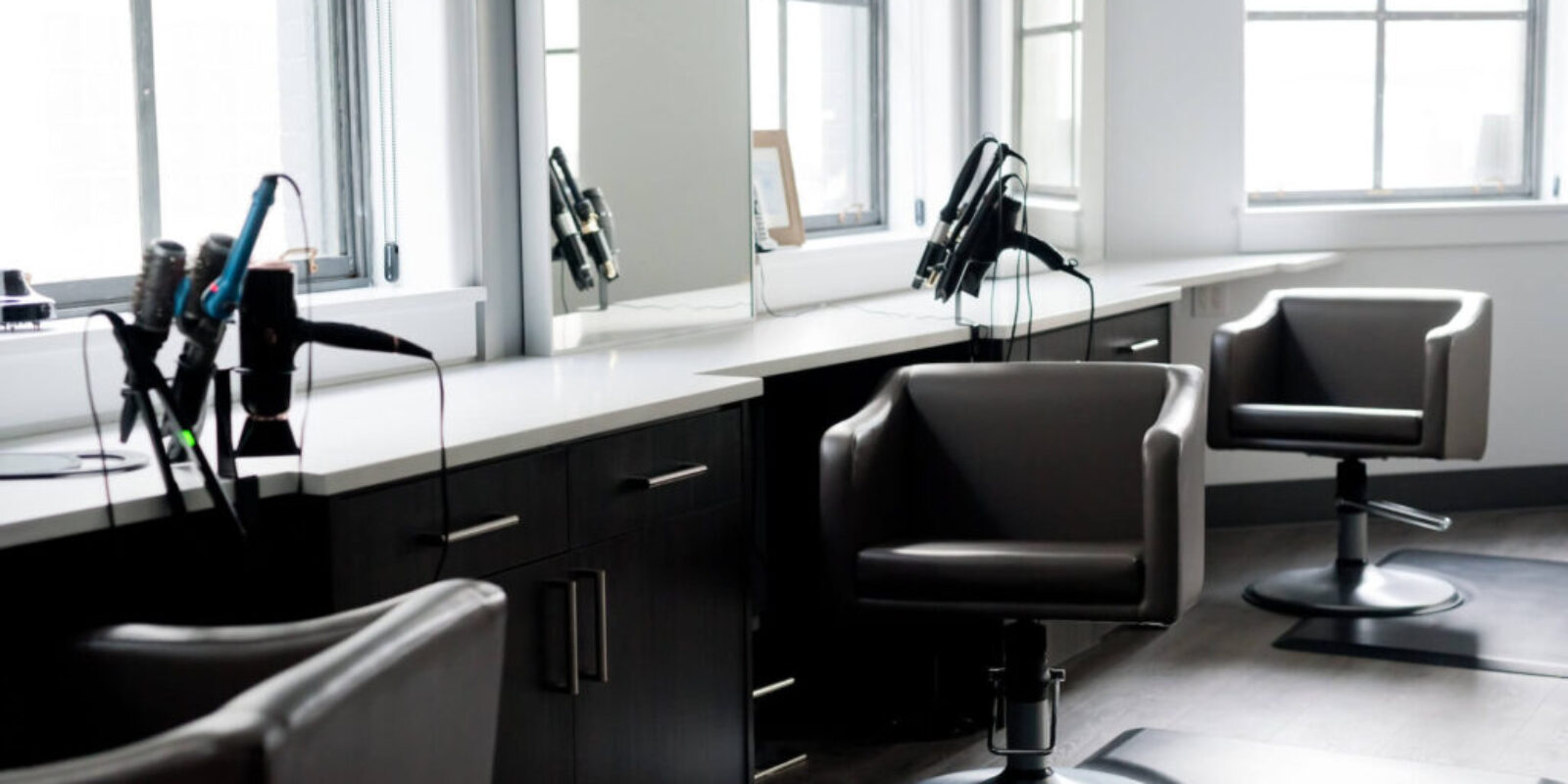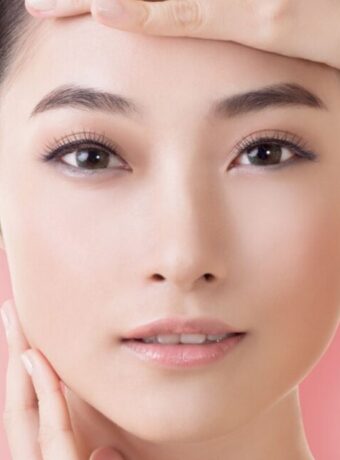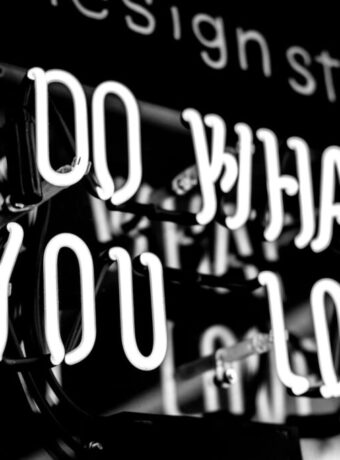The beauty business is a lucrative and ever-growing industry.
There is always something new to discover, from skincare and hair care to makeup and nails. For those passionate about design, the beauty business can be an exciting and rewarding career. From creating stunning looks for fashion shows to developing the latest must-have product, there are endless possibilities for those with a creative flair.
But because of the fierce competition, it is essential to know how to brand a beauty business.
With so much diversity within the industry, there is truly something for everyone in the beauty business. Whether you’re interested in becoming a makeup artist or working in product development, there are endless opportunities to explore.
-
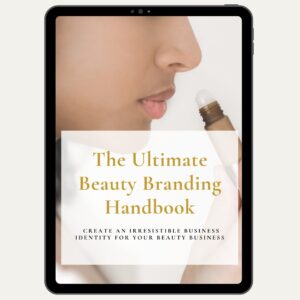 The Ultimate Beauty Branding Handbook11,00 $ incl. VAT
The Ultimate Beauty Branding Handbook11,00 $ incl. VAT
10 Essentials To Know: Brand A Beauty Business
Here are some ideas to help you brand your beauty salon and its website effectively:
- Unique name: Choose a memorable and distinctive name for your beauty salon that reflects the essence of your services and target audience. The name should be easy to pronounce and spell, and should give a sense of the experience clients can expect.
- Logo design: Create a professional and eye-catching logo that represents the spirit of your salon. Use colors, shapes, and typography that align with your brand personality and target audience’s preferences.
- Brand colors and typography: Choose a color palette and typography that reflect your brand identity and resonate with your target audience. Consistently use these colors and fonts across all your marketing materials, website, and salon interior to create a cohesive brand experience.
- Tagline or slogan: Develop a catchy tagline or slogan that communicates the unique value proposition of your beauty salon. This should be short, memorable, and encapsulate the essence of your brand.
- Brand story: Craft a compelling brand story that showcases your salon’s mission, vision, and values. Share your journey, your passion for the beauty industry, and what sets your salon apart from others.
- Salon interior and ambiance: Design your salon interior to reflect your brand identity and create a comfortable, inviting atmosphere. Consider elements like lighting, furniture, decor, and music to enhance the overall experience for your clients.
- Consistent online presence: Ensure your website and social media profiles are consistent with your brand’s visual identity and messaging. Use high-quality images, engaging content, and professional design elements to create a cohesive online experience.
- Unique selling proposition (USP): Clearly define and communicate what makes your beauty salon different from competitors. This could be a specific service, treatment, or approach to customer care that sets you apart.
- Client personas: Create detailed client personas to better understand your target audience and tailor your branding, marketing, and services to their needs and preferences.
- Community involvement: Align your beauty salon with local events and community initiatives to establish a strong local presence and showcase your brand’s commitment to giving back.
Remember to keep your target audience in mind throughout the branding process, as they are the ones you want to resonate with and attract to your salon. By creating a consistent and appealing brand, you’ll set your beauty salon and website up for long-term success.
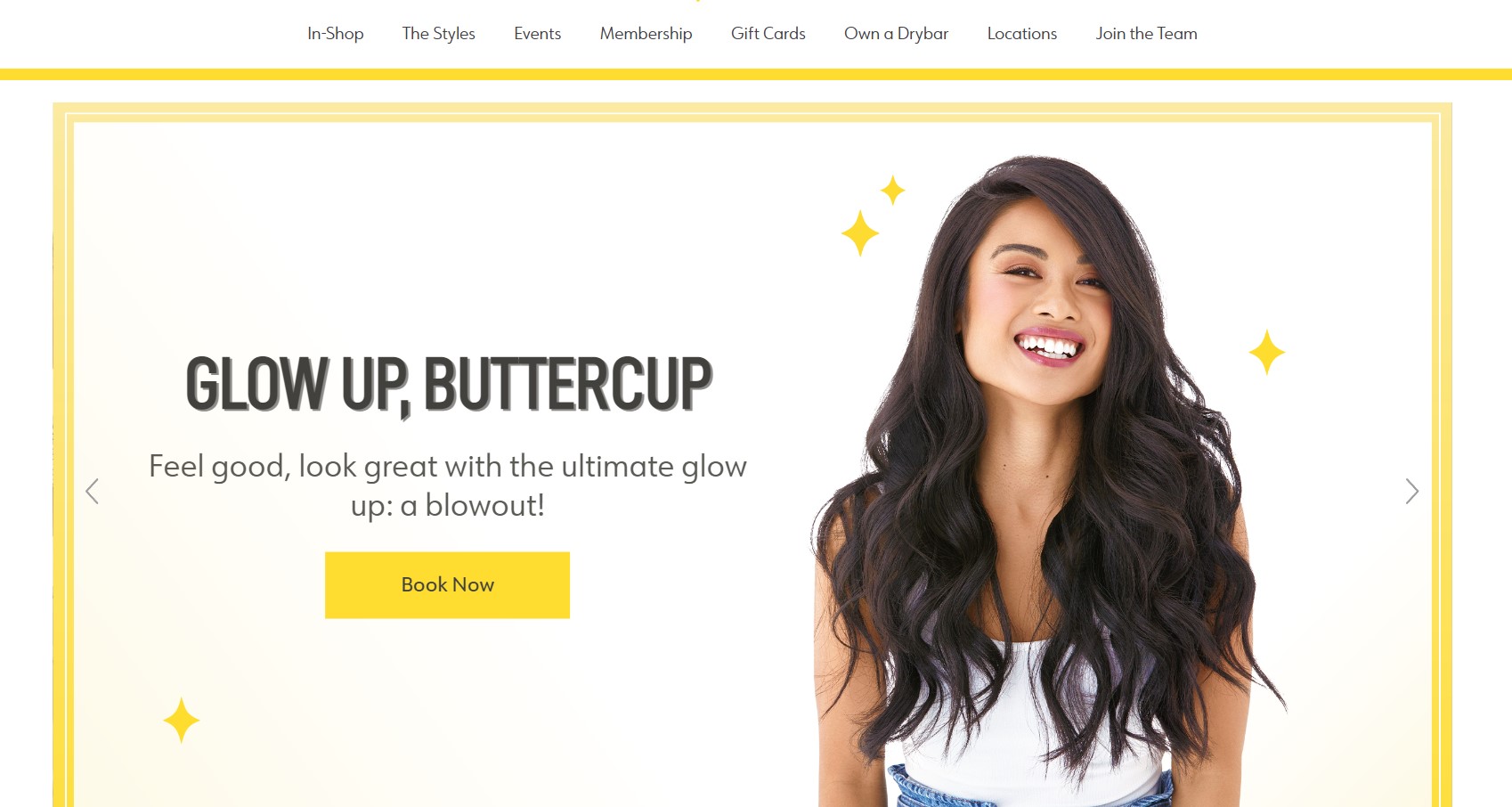
8 Main Beauty Industries
The beauty industry encompasses a wide range of sub-industries, each catering to different aspects of personal care and grooming.
One of the largest sectors is makeup, a billion-dollar industry that helps individuals enhance their natural beauty or create entirely new looks with products such as foundation, lipstick, and eyeshadow. Skincare is another thriving sector, with a growing emphasis on the importance of maintaining healthy skin through the use of cleansers, toners, serums, and moisturizers.
Hair care plays a crucial role in the beauty industry, offering products like shampoo, conditioner, hair oil, and treatments for various hair types and concerns.
Nail care, focusing on nail health and appearance, provides a range of products from nail clippers to cuticle creams. The fragrance industry capitalizes on the power of scent, offering perfumes, colognes, body sprays, and scented candles to help individuals express their personalities or enhance their natural aroma.
Bath and body products, such as soaps, lotions, and perfumes, contribute to both personal hygiene and overall well-being.
Oral care, often overlooked, plays a vital role in beauty, with products like toothpaste, mouthwashes, floss, and whitening strips designed to improve oral health and boost confidence in one’s smile.
Lastly, the rapidly growing eyelashes and eyebrows segment offers a plethora of products, including false eyelashes, brow stencils, tinted gels, and powders, allowing people to achieve their desired look and contributing to the industry’s massive yearly revenue.
Let’s have a closer look at each of these industries:
1. Makeup
The makeup industry is worth billions of dollars and is only growing. Makeup is used by people of all ages, genders, and races to enhance their natural beauty or create a whole new look. There are endless possibilities for makeup, from the product type to the color and application.
2. Skincare
Skincare is a huge industry that continues to grow each year. People are becoming increasingly aware of the importance of taking care of their skin and, as a result, are willing to spend more money on skincare products. There are various skincare products on the market, from cleansers and toners to serums and moisturizers.
3. Hair Care
Everyone has hair, so everyone needs some hair care product. Whether it’s shampoo, conditioner, hair oil, or hair treatment, there’s a product for everyone.
4. Nail Care
While not everyone wears nail polish, almost everyone has nails that must be taken care of. There are various nail care products on the market, from nail clippers and files to cuticle creams and treatments.
5. Fragrance
Fragrance can be used to enhance one’s natural scent or create a whole new scent altogether. Various fragrance products are on the market, from perfumes and colognes to body sprays and scented candles.
6. Bath & Body
Bath and body products are also essential in the beauty business. These products can improve one’s appearance or simply make one feel good. There are various bath and body products on the market, from soaps and shampoos to lotions and perfumes.
7. Oral Care
Oral care is another important aspect of beauty that is often overlooked. Oral care products can improve oral health or simply make one feel good about their smile. Various oral care products are on the market, from toothpaste and mouthwashes to flosses and whitening strips.
8. Eyelashes and eyebrows
The beauty industry is big business, and nowhere is this more evident than in the eyelashes and eyebrows category.
These days, all sorts of products are available to help people achieve the perfect look, from false eyelashes and brow stencils to tinted gels and powders. And the options don’t stop there – there are also dozens of brands to choose from, each offering its own unique take on the perfect lashes or brows. With so many options available, it’s no wonder the eyelashes and eyebrows industry is worth billions of dollars yearly.
-
 The Ultimate Beauty Branding Handbook11,00 $ incl. VAT
The Ultimate Beauty Branding Handbook11,00 $ incl. VAT
Stand Out From The Competition And Niche Down!
In today’s competitive beauty market, niching down and differentiating one’s beauty business is crucial to stand out and cater to specific customer needs.
Here are several options for niching down and differentiating within various beauty industry sectors:
- Organic skincare clinic: Focus on offering eco-friendly, non-toxic, and organic skincare products and treatments for clients who prioritize natural ingredients and sustainability. This could include facials, body treatments, and skincare consultations using products that are free from harmful chemicals, preservatives, and synthetic fragrances.
- Hair salon for women over 50: Target a specific age group by offering specialized hair care services and treatments tailored to the needs of mature women. This could include haircuts that suit different face shapes and hair textures, color treatments that cover gray hair or enhance natural tones, and scalp treatments for age-related hair loss or thinning.
- Vegan beauty salon: Establish a salon that exclusively uses vegan, cruelty-free products for all services. This will appeal to clients who are conscious about animal welfare and prefer using products that do not contain any animal-derived ingredients.
- Holistic beauty and wellness center: Combine beauty treatments with holistic wellness practices, such as massage therapy, acupuncture, or aromatherapy, to offer clients a comprehensive approach to their well-being. This type of center could provide services that focus on stress reduction, relaxation, and overall health, in addition to traditional beauty treatments.
- Multicultural hair salon: Cater to clients with diverse hair types and textures by offering specialized services, such as braiding, weaving, extensions, and natural hair care treatments. Ensure that your salon’s staff is trained in various techniques and understands the unique needs of clients with different hair types.
- Men’s grooming lounge: Create an exclusive space for men’s grooming, offering services such as haircuts, beard trims, shaves, and facial treatments tailored specifically to male clients. Design the lounge with a masculine aesthetic to create a comfortable environment for men to enjoy their grooming experience.
- Eco-friendly nail salon: Differentiate your nail salon by using non-toxic, eco-friendly nail products and implementing sustainable practices, such as water conservation, energy efficiency, and waste reduction. This will appeal to clients who are environmentally conscious and prefer a salon that aligns with their values.
- Bridal beauty specialist: Focus on providing pre-wedding and wedding day beauty services for brides and bridal parties. This could include bridal makeup and hair, skin care treatments, and nail services tailored to the needs and preferences of brides preparing for their special day.
- Specialty spa treatments: Offer unique and specialized spa treatments that set your business apart from the competition, such as mineral-rich mud baths, cryotherapy, or hydrotherapy. These niche treatments can attract clients seeking unique experiences and alternative therapies for relaxation and rejuvenation.
By focusing on a niche market and offering specialized services, you can differentiate your beauty business and create a loyal customer base that appreciates the unique experience and expertise you provide.
Mobile beauty services:
Offer on-demand beauty services by providing treatments in clients’ homes or at their preferred locations. This flexible business model can cater to busy professionals, new mothers, or clients with limited mobility who may find it difficult to visit a traditional salon.
Foundations for a beauty business branding
A well-executed brand can mean the difference between a thriving beauty business and one that struggles to get by.
To create a successful brand, you must start with a strong foundation. That foundation starts with knowing who you are as a business, your target market, and what sets you apart from your competition. From there, you can begin to craft messaging and visuals that will resonate with your target market and help you achieve your business goals.
No matter your industry, a well-branded website, and salon interior wins you customers and business.
A sloppy branding, a half-made website, a faceless salon – these mistakes attract customers who are unwilling to pay for the services.
Step 1: Define your brand
Before you can start branding your business, you need to take some time to define who you are as a company.
What are your core values? What is your mission statement? What do you want people to think of when they hear your company name? Answering these questions will give you a good starting point for crafting the rest of your brand.
Step 2: Know your target market
Who are you trying to reach with your product or service?
Knowing the answer to this question is critical for branding because everything from your messaging to your visual identity should be designed with your target market in mind. Trying to appeal to everyone will only create a confused and unfocused brand.
Step 3: Differentiate yourself from the competition
What makes you unique?
Why should people choose you over the other businesses in your industry? This is another vital question to answer when defining your brand. If you can’t think of anything that sets you apart from the competition, it’s time to go back to the drawing board.
Step 4: Create an unforgettable logo
Your logo is one of the essential elements of your brand identity—it’s often the first thing people will think of when they see or hear your company name.
So, your logo must be memorable, eye-catching, and reflective of your company’s values and mission. Plenty of logo design firms can help turn your vision into reality if you’re unsure where to start. Just be sure to do your research and make sure their style is a good fit for what you’re looking for before making any commitments.
Step 5: Develop a consistent visual identity
Once you have a logo, it’s time to start thinking about other visuals, such as colors, fonts, and imagery associated with your business.
A consistent visual identity across all platforms helps people recognize and remember your brand more easily. But beware—a little goes a long way here. Too many colors, fonts, or patterns can be just as off-putting as too few. Stick to 1-2 main colors, 1-2 fonts (maximum), and simple patterns or imagery that complement rather than compete with your logo and other visual elements.
Step 6: Get the word out there with strategic marketing materials
You’ve got all the pieces—now it’s time to put them together and start promoting your business!
There are many ways to get the word out there these days, so don’t be afraid to get creative—just make sure whatever marketing materials you create are on-brand and in line with Step 5’s guidelines for consistency. You might want to consider traditional print ads, online ads, promotional products (like branded notebooks or t-shirts), or even sponsoring local events or participating in trade shows or conventions related to your industry.
-
 The Ultimate Beauty Branding Handbook11,00 $ incl. VAT
The Ultimate Beauty Branding Handbook11,00 $ incl. VAT
What elements and information should you include on your website?
Unfortunately, there are so many amazing beauty salons and shops out there that are struggling to make ends meet as they are basically invisible online, or their websites are lacking the most basic information: prices, contact information, and physical address.
Even worse, many are still present on Facebook only – and that is a turn-off for many otherwise potential customers.
A well-designed beauty business website should be visually appealing, and user-friendly, and provide all the necessary information for potential clients to learn about the business and book services. Here are some key elements and information to include on a beauty business website:
- Homepage: The homepage should showcase your brand identity and make a strong first impression. Use high-quality images, clear typography, and a concise tagline or mission statement to communicate your brand values and unique selling proposition.
- About Us: Share your brand story, mission, vision, and values. Include information about the salon’s history, team members, and any awards or industry recognition. This section helps build trust and credibility with potential clients.
- Services & Pricing: Clearly list all the services your beauty business offers, along with detailed descriptions and pricing. Consider categorizing services by type (e.g., hair, nails, skincare) to make it easy for clients to find what they’re looking for.
- Online Booking: Integrate an online booking system to allow clients to schedule appointments directly through your website. This not only streamlines the booking process but also helps reduce no-shows and last-minute cancellations.
- Testimonials & Reviews: Showcase positive client testimonials and reviews to build trust and credibility. Consider adding a dedicated section on your website or integrating reviews from third-party platforms like Google or Yelp.
- Portfolio: Display a portfolio of your work, including before-and-after photos and examples of various services you offer. This helps potential clients see the quality of your work and decide if your beauty business is the right fit for them.
- Blog/Resource Center: Create a blog or resource center with informative articles, tutorials, and tips related to beauty, skincare, and wellness. This not only provides value to your clients but also helps with search engine optimization (SEO) and positioning your business as an industry expert.
- Contact Information: Clearly display your salon’s address, phone number, email, and business hours. Consider adding a contact form or chat feature for clients to reach out with questions or concerns easily.
- Social Media Links: Include links to your social media profiles so clients can follow and engage with your brand on different platforms. This helps build brand awareness and community around your beauty business.
- Policies & FAQs: Provide information on your salon’s policies, such as cancellation or rescheduling, as well as frequently asked questions (FAQs) to address common client concerns.
- Mobile Responsiveness: Ensure your website is mobile-friendly and easy to navigate on various devices, as many clients will access your website from their smartphones or tablets.
- Carefully executed SEO – optimization for Google search.
By including these key elements and information on your beauty business website, you’ll create a professional and informative online presence that effectively communicates your brand, showcases your services, and makes it easy for potential clients to book appointments. Be the first in your area to cover all these requirements.

What Type Of Customers Do You Want To Attract?
I have worked out a theory of four brand personality groups, and I am sure your business fits into at least one of those four.
Maybe you need to mix two personalities, but never more than that.
Personality group 1: an open, friendly, playful approach
You want to attract younger customers, maybe even teenagers up to 25 years old, who love colors, playfulness, and a casual environment.
Your price level is average or perhaps a bit cheaper, but it does not mean it has to be on the discount level.
Your staff is very welcoming and friendly, and the communication is casual.
Visual branding for personality group 1
Color palette: Tints – pure hues are saturated with white. Bright, bouncy colors that give a happy feel
Typefaces: Headers and titles in round, playful typefaces. Body text in simple-looking typefaces that are often sans serifs but not always. The type is very easy to skim through.
Illustrations: Round, simple forms, not much attention to detail.
Icons: round lines, simple.
Photographic style: Lightful images that have a lot of movement in them. Brightness, lots of colors.
Materials and textures: No problem using artificial materials, plastic, rubber, or painted wood. Colored glass, colored paper.
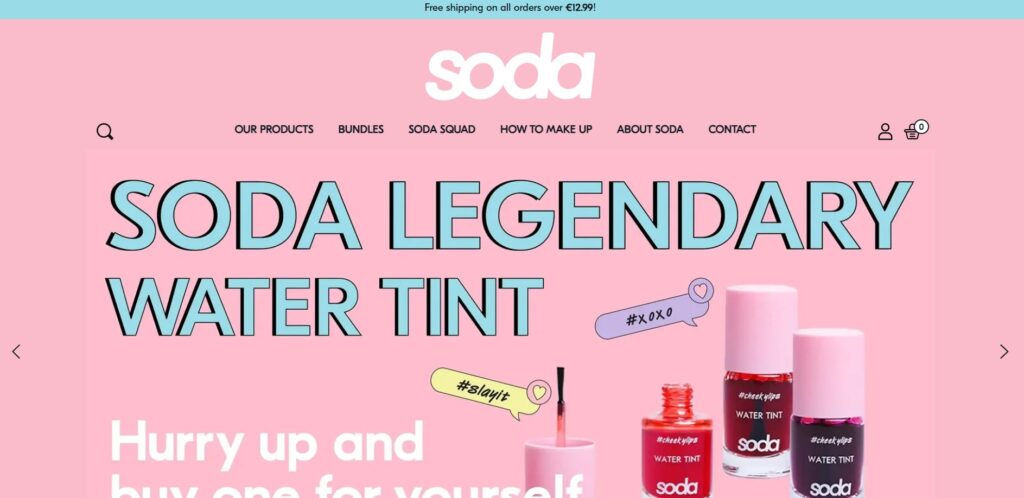
Personality group 2: an elegant, soft, a bit formal attitude
Your customer loves everything understated, maybe even minimalistic, yet feminine.
High quality, attention to detail. Usually, your target group is women only.
The price level is average and above. You use as natural products as possible, but they have very high quality and are well-processed.
Your communication is friendly but formal and somewhat reserved. You expect your customers to show high respect to you and your staff; of course, you do the same.
Visual branding for personality group 2
Color palette: Tones – pure hues are saturated with gray. Muted, pastel colors give a tranquil feel.
Typefaces: Headers and titles on elegant calligraphy or scripts. Body text in elegant typefaces that are often serifs but not always. Good space between the letters and lines.
Illustrations: Fine lines and high attention to detail.
Icons: Fine lines, detailed, delicate.
Photographic style: Lightful images, beautiful work with depth of focus and bokeh.
Materials and textures: High-quality materials that are either natural or artificial materials with a fine finish.
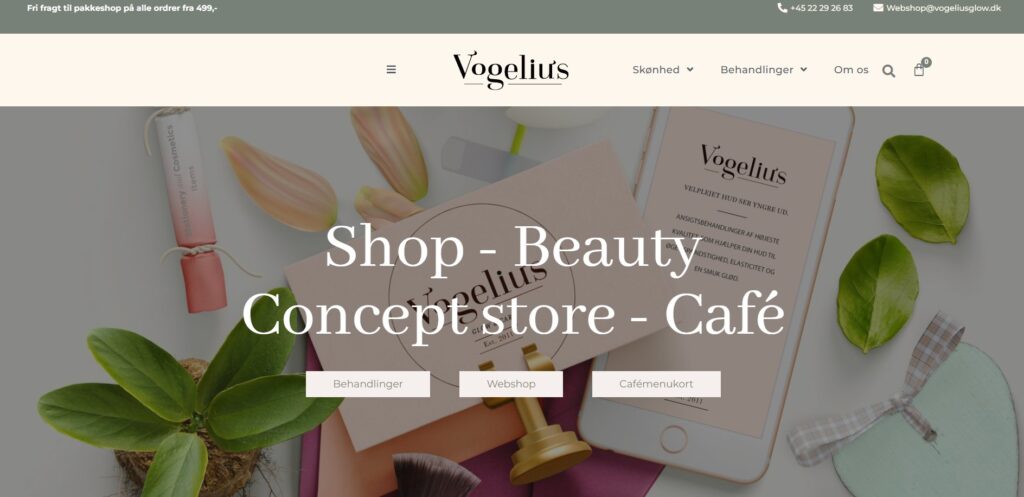
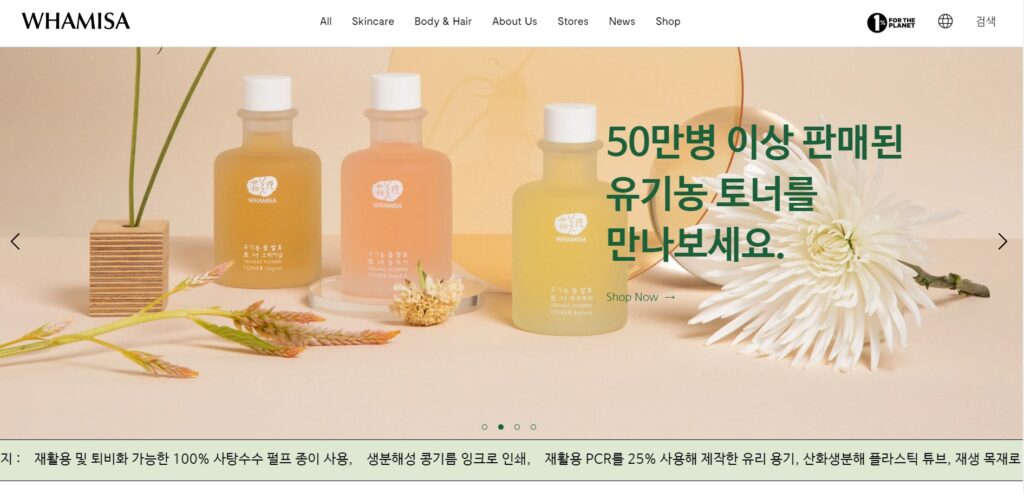
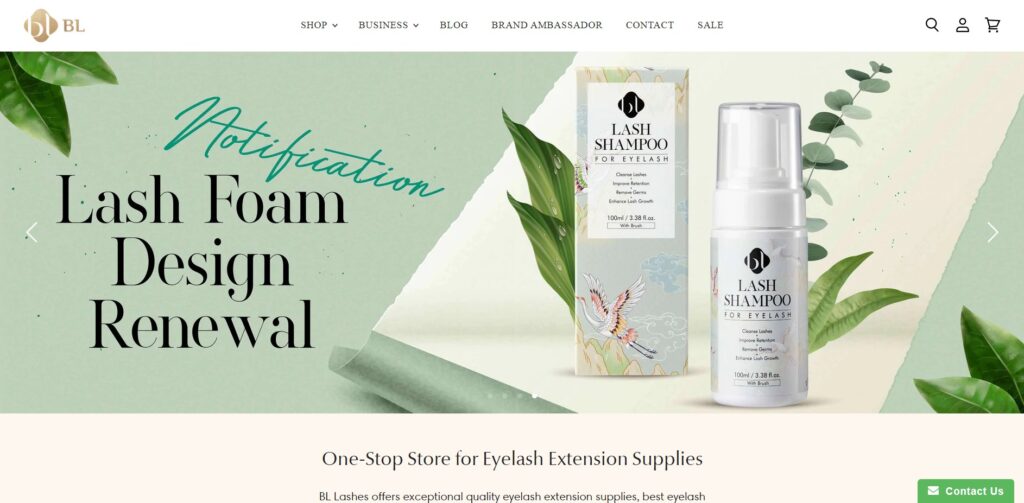
Personality group 3 is a down-to-earth, perhaps organic, or sustainability-focused service and product
You focus much on natural, ecological products, as little processed as possible, as “earthy.”
You focus on communicating abundance, friendliness, and even a community-centered mindset.
Your price level is average; your customer is a friendly and open man or woman, a family or an elder person – as long as you give them a warm welcome and stay away from evil plastic.
Visual branding for personality group 3
Color palette: Shades- pure hues are saturated with black. Intensive, deep colors give an abundant and warm feel.
Typefaces: Headers and titles in rough marker imitation, retro, heavier typefaces. Body text simpler typefaces that can be slab serifs, but not necessarily. Don’t be afraid to be bold.
Illustrations: Rougher lines, bold.
Icons: Rounded corners, heavier lines.
Photographic style: Deep, abundant images, Moodiness, natural backgrounds, nostalgia, time-eaten elements.
Materials and textures: Rough wood, heavy glass, timber, linen, hand-made paper.
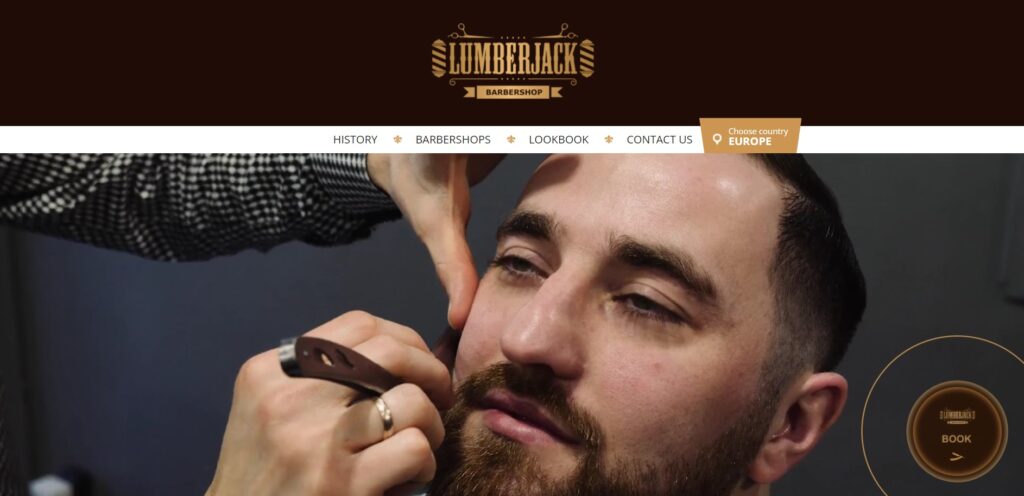
Personality group 4: a high-end, luxury beauty product or service
It is all about drama!
You go for your goals without hesitation. Your business only serves well-paying clients with high expectations for your services and customer service. Everything is super minimalistic – or I-just-can’t-so-bold!
Your website and physical presence are top-notch, your materials are of the highest quality, and every customer gets 100% attention.
Visual branding for personality group 4
Color palette: Pure hues supported with neutrals. Intensive, cool colors give a bold and reserved feel.
Typefaces: Headers and titles in dramatic calligraphy, very minimalistic or super bold scripts. Body text in delicate typefaces, both sans serifs and serifs work well. Good space between letters. Be dramatic!
Illustrations: Fine lines, bold or very minimalistic.
Icons: Sharp corners, fine lines.
Photographic style: Clear, cool images or the opposite – very muddy pictures. “Cold” backgrounds and styling elements – class, metal, concrete.
Materials and textures: Fine wood, fine glass, silk, and glossy paper.
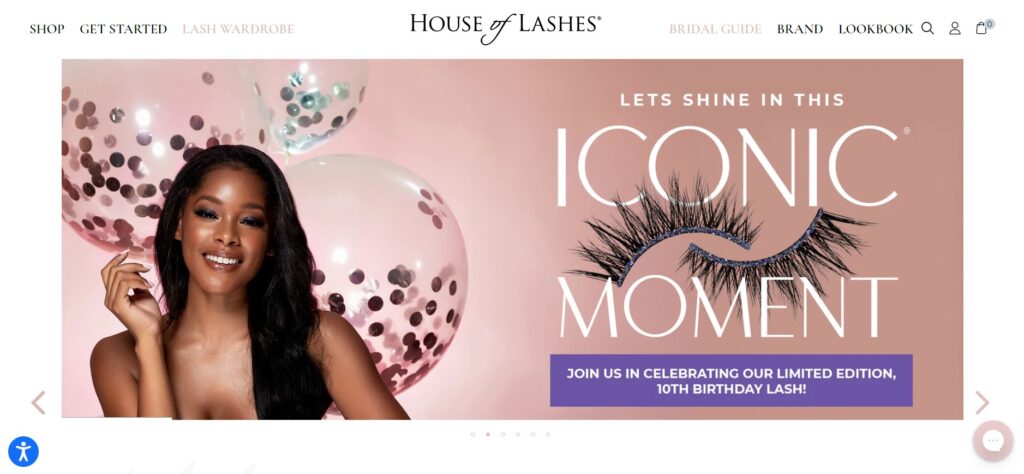
Combining different personalities
Maybe your beauty business only uses completely organic materials, targets men only, and has a high price tag. Well, then you combine personalities 3 and 4.
Or one common approach is a very feminine and understated branding while wishing to target high-end customers, combining personalities 2 and 4.
10 examples of well-branded beauty salons
Here are 10 well-branded beauty salons from around the world, known for their unique concepts, exceptional services, and strong brand identities:
Drybar: A popular salon chain in the United States, Drybar specializes exclusively in blowouts and styling services, offering a consistent and enjoyable experience across all their locations.

Hershesons: This London-based salon is renowned for its modern, cutting-edge hair styling services and innovative approach to beauty. The salon has become a go-to destination for fashion-forward clients seeking expert advice and top-quality services.
Ouidad: As a pioneer in curly hair care, the Ouidad salons in New York City and Los Angeles focus on catering to clients with curly and textured hair, offering specialized treatments and styling techniques.
Paintbox nail studio branding: A modern and stylish nail studio located in New York City, Paintbox is known for its creative nail art designs and curated selection of trendy nail colors, appealing to fashion-savvy clients.
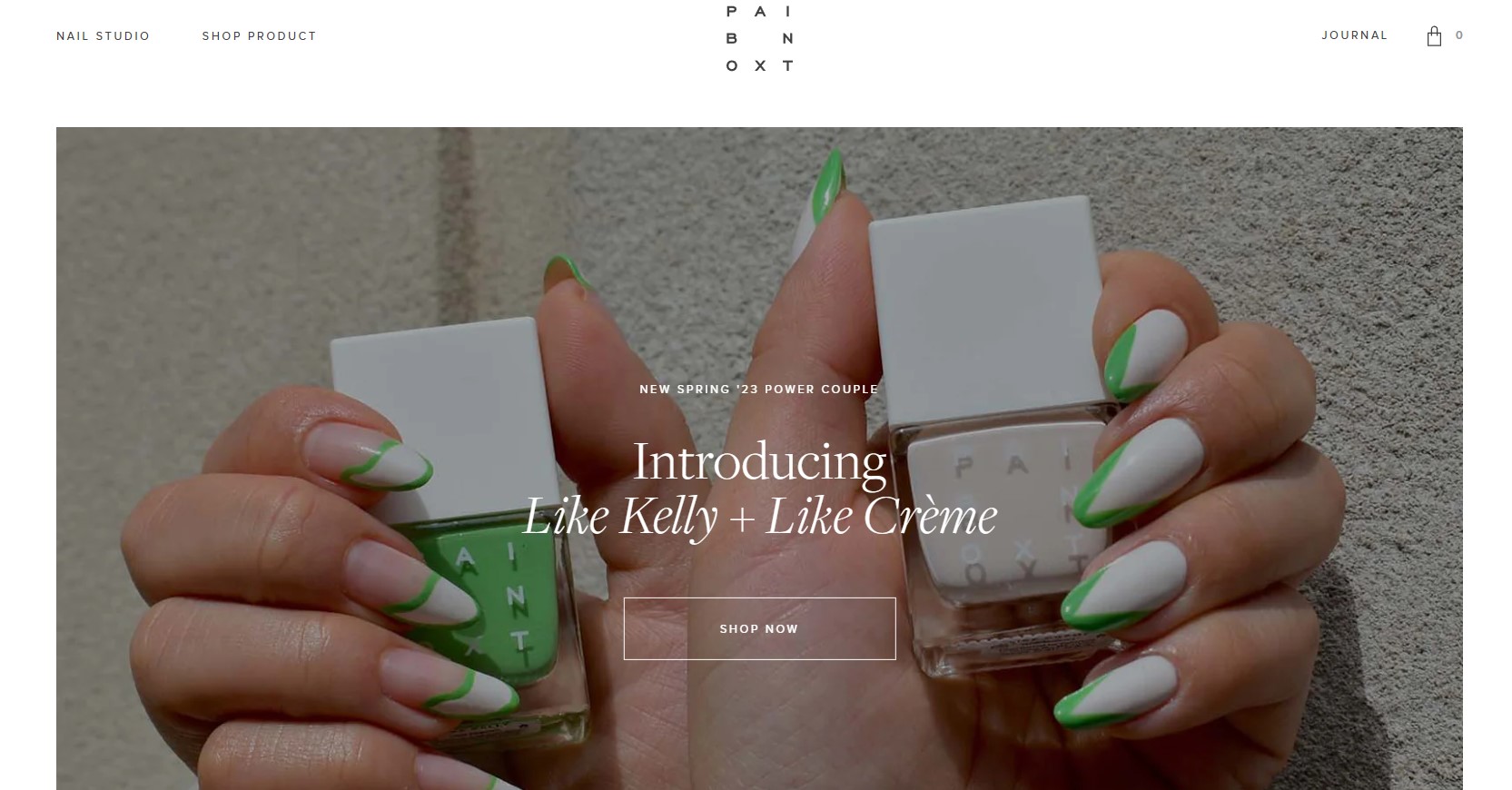
Ruffians: With locations in London and Edinburgh, Ruffians is a popular men’s grooming salon that offers a comfortable and masculine environment for clients seeking top-quality haircuts, shaves, and beard care.
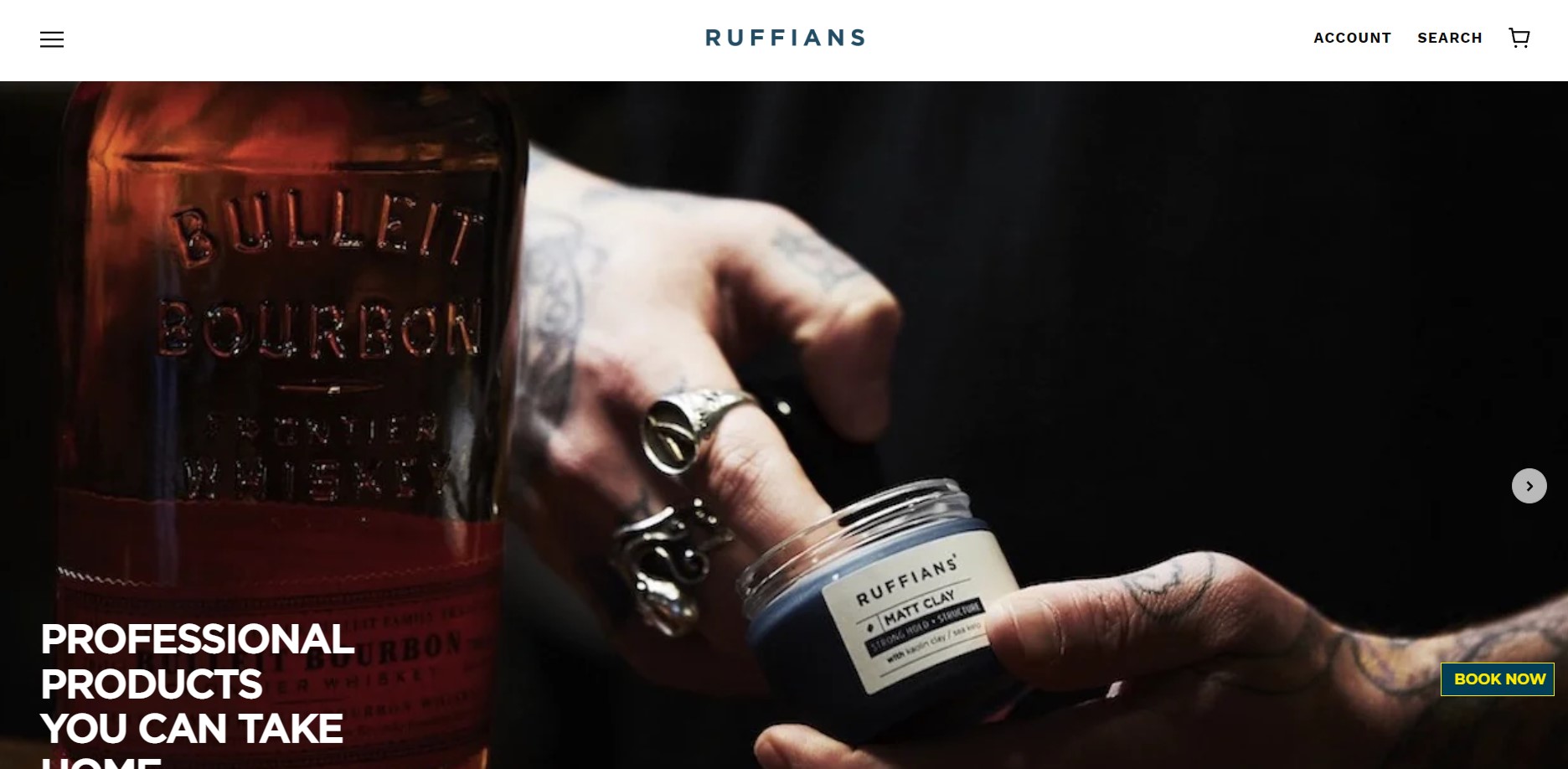
Blushington: A makeup and beauty lounge with several locations in the United States, Blushington specializes in professional makeup application and beauty services, creating a welcoming and empowering atmosphere for clients to feel their best.
Chez Vous: This highly-rated hair salon in Singapore is known for its personalized approach to hair care, offering tailored services and treatments to meet the unique needs and preferences of each client.
Allertons: Located in Leeds, UK, Allertons is a multi-service beauty salon offering hair care, skin care, and makeup services in a stylish and contemporary setting. The salon is known for its exceptional customer service and professional approach to beauty.
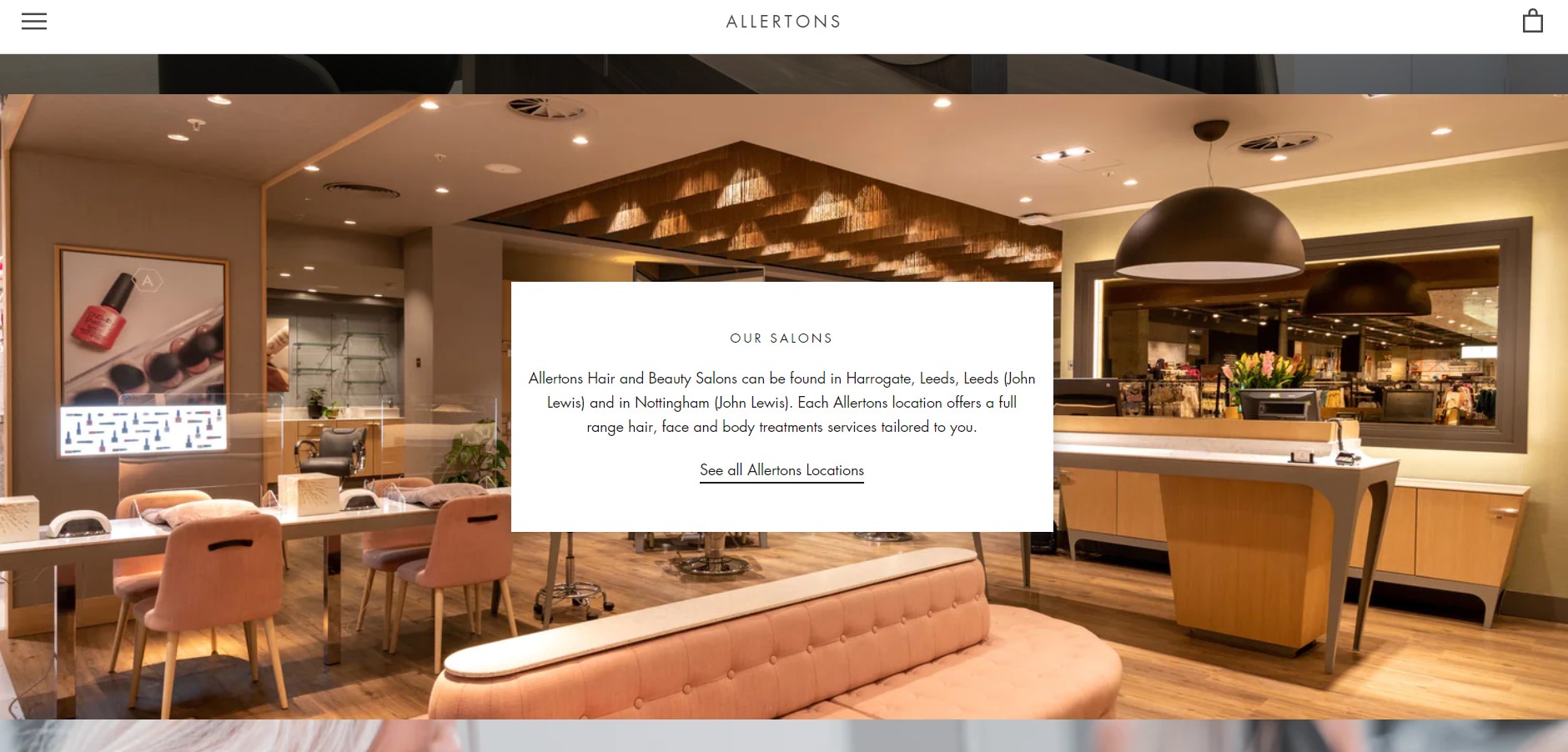
Conclusion:
Creating a solid brand for your beauty business is essential if you want to succeed in today’s competitive marketplace.
By defining who you are as a company, knowing your target market, and differentiating yourself from the competition, you’ll be well on your way toward developing an unforgettable brand identity that will help your business achieve its goals.
-
 The Ultimate Beauty Branding Handbook11,00 $ incl. VAT
The Ultimate Beauty Branding Handbook11,00 $ incl. VAT
Read more about the four brand personality groups:
- Group 1- Brand Design 1: How To Brand a Youthful, Open, and Happy Business
- Group 2- Brand Design 2: How To Brand an Elegant, Feminine Business
- Group 3- Brand Design 3: How To Style an Earthy, Community-Focused Business
- Group 4- Brand Design 4: How To Brand a High-End, Luxury Business

